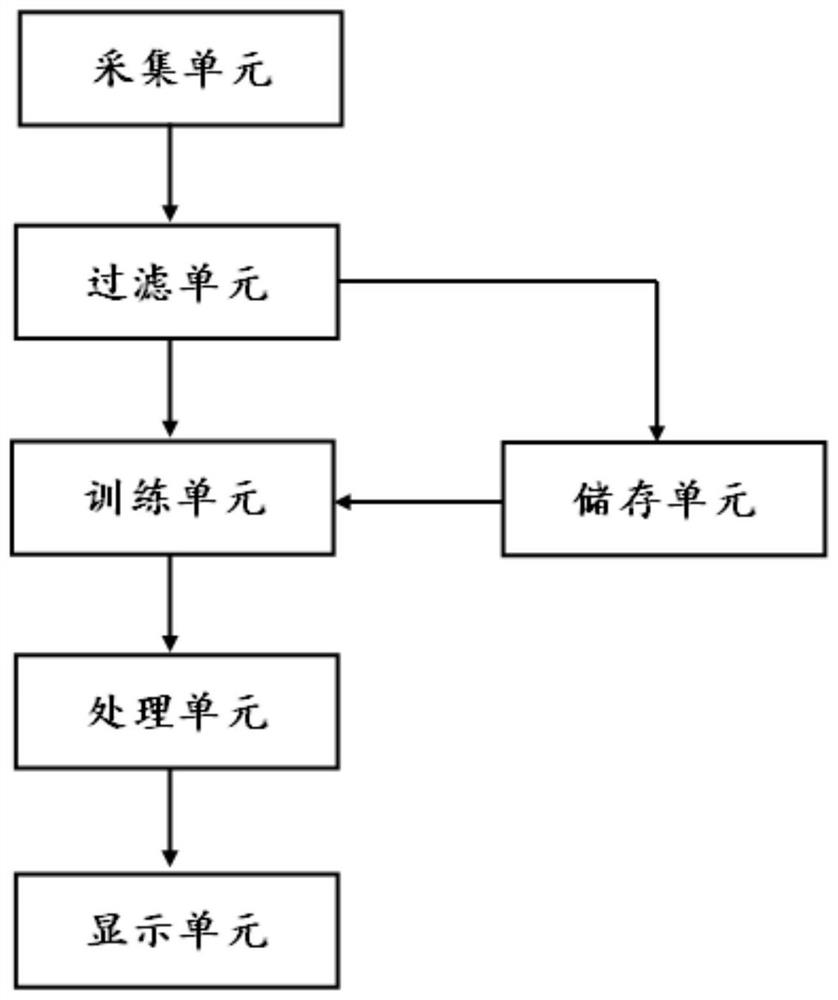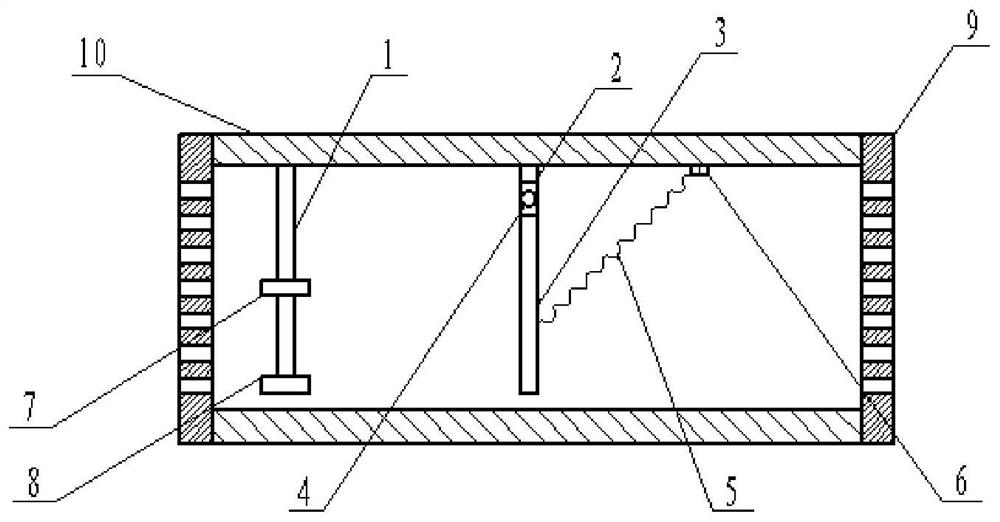Surface water monitoring management system and method
A technology for monitoring and management of surface water, applied in neural learning methods, instruments, biological neural network models, etc., can solve the problems of unwarranted, ignoring water surface floating objects and water color and other obvious changes.
- Summary
- Abstract
- Description
- Claims
- Application Information
AI Technical Summary
Problems solved by technology
Method used
Image
Examples
Embodiment 1
[0051] The embodiment of the surface water monitoring and management system of the present invention is basically as attached figure 1shown, including:
[0052] The acquisition unit is used to collect the water body image of the surface water surface in real time and send the water body image;
[0053] The filtering unit is used to receive the water body image, perform filtering processing on the water body image, and send the filtered water body image;
[0054] a storage unit, configured to receive the filtered water body image and store the filtered water body image;
[0055] The training unit is used to obtain the filtered water body image, generate corresponding multi-scale training sample data based on the filtered water body image, and use the multi-scale training sample data to train the neural network to obtain a neural network model;
[0056] The processing unit is used to identify floating objects on the filtered water body image according to the neural network mod...
Embodiment 2
[0074] The only difference from Embodiment 1 is that when identifying the floating object, it is first identified by an edge detection algorithm, and if the floating object cannot be identified, then it is identified based on the key point data. The steps of identifying floating objects through the edge detection algorithm are as follows: First, image segmentation processing is performed on the water body image, for example, image segmentation processing is performed on the water body image collected this time using region segmentation technology, and information irrelevant to the water body is removed to obtain the segmented Image. Then, grayscale processing is performed on the segmented image, for example, the color water body image is processed into a grayscale water body image by using a maximum value method, an average value method or a weighted average value method. Finally, the edge detection algorithm is used to identify the floating objects in the grayscale water imag...
Embodiment 3
[0076] The only difference from Embodiment 2 is that it also includes a collection device, such as the attached figure 2 As shown, the collection device includes: a first pole 1, a second pole 2, a rotating rod 3, a pin 4, a spring 5, a tension sensor 6, a controller 7, a water quality detector 8, a filter plate 9, and a housing 10 . The housing 10 is cylindrical, and the left and right ends of the housing 10 are equipped with filter plates 9, for example, by screws; the filter plates 9 are drilled with a plurality of filter holes. One end of the first strut 1 is welded on the inner wall of the housing 10, and the controller 7 and the water quality detector 8 are fixedly installed on the other end of the first strut 1, for example, by screws or by steel wires. One end of the second pole 2 is welded on the inner wall of the housing 10 , and the other end is hinged with the rotating rod 3 , that is, hinged through the pin 4 , and the rotating rod 3 can rotate freely around the...
PUM
 Login to View More
Login to View More Abstract
Description
Claims
Application Information
 Login to View More
Login to View More - R&D
- Intellectual Property
- Life Sciences
- Materials
- Tech Scout
- Unparalleled Data Quality
- Higher Quality Content
- 60% Fewer Hallucinations
Browse by: Latest US Patents, China's latest patents, Technical Efficacy Thesaurus, Application Domain, Technology Topic, Popular Technical Reports.
© 2025 PatSnap. All rights reserved.Legal|Privacy policy|Modern Slavery Act Transparency Statement|Sitemap|About US| Contact US: help@patsnap.com


